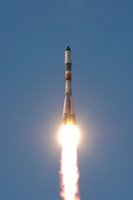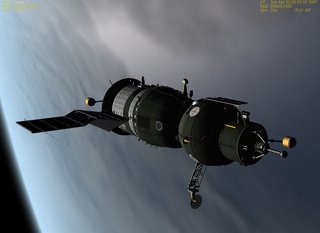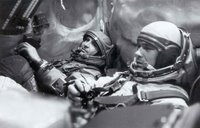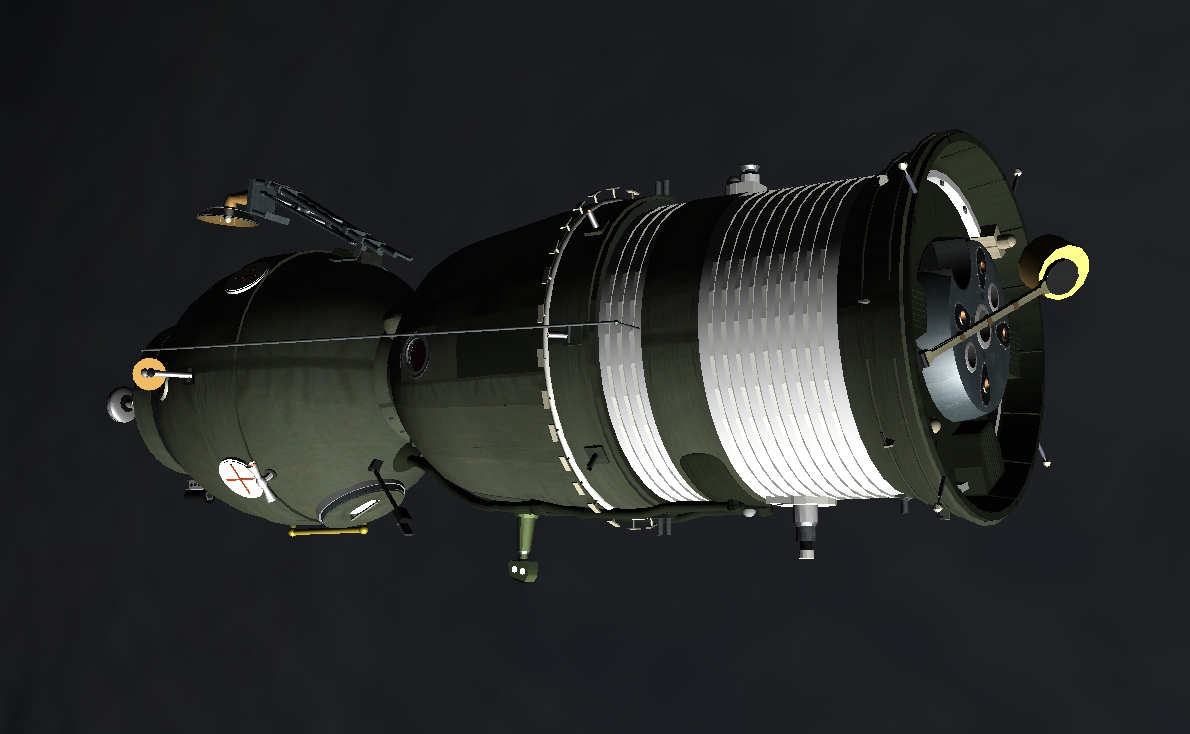на последнем лете!
At last it's summer! Time to kick back and relax a bit ... enjoy time at the beach, longer and warm evening stroll ... yeah right, no time to slack! We got some Soyuz' business to finish! :-) ... Maybe if I change my desktop's background from a Soyuz launch to a picture of British Columbia's summer sky, I'll get some tanning done? No? ... oh well :-)
While I have been coding away on the 2D panels lately, Castorp have been reworking some of the orbital module's (BO) details for the early Soyuz variants: OK, OKS and T. Here's a screenshot of the new 7K-T:
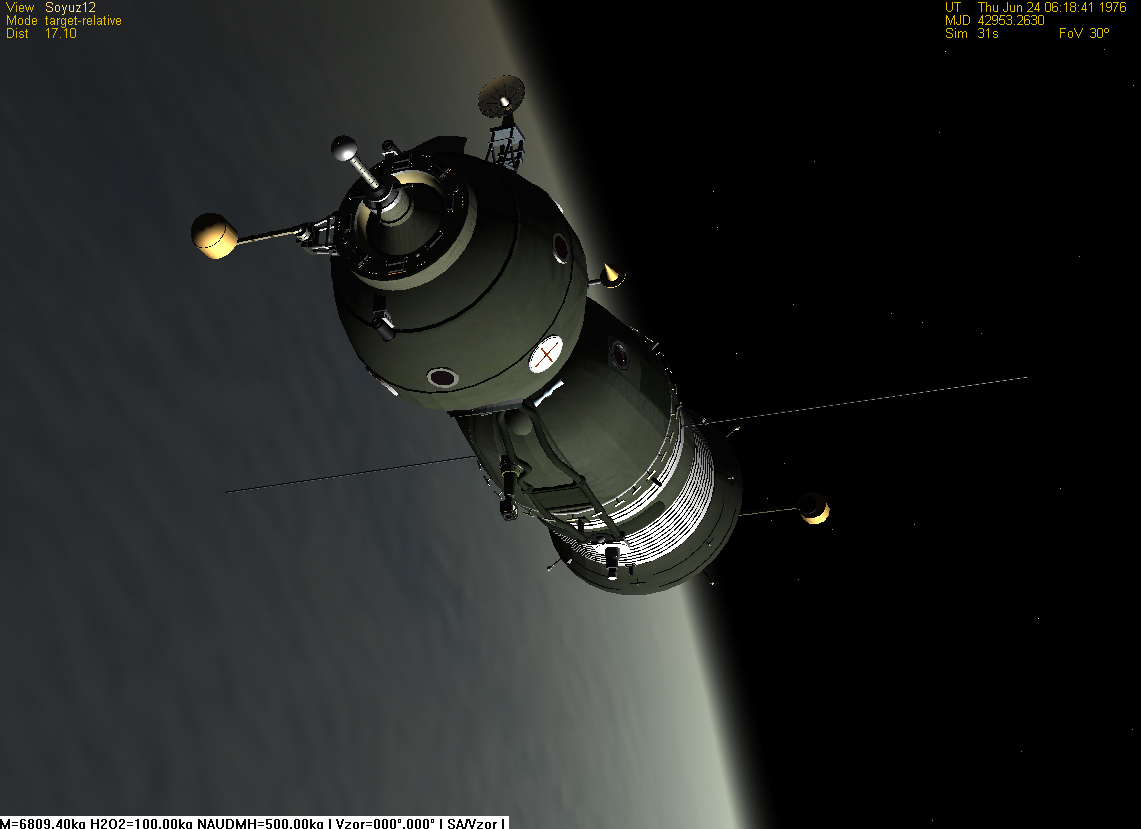 Now, the Igla antenna visible on the left of the image, isn't correct for that particular variant. Castorp, inspired by a picture of a more recent Soyuz variant, did a very good job on that particular antenna ... too bad it's the wrong one for that variant! }:->
Now, the Igla antenna visible on the left of the image, isn't correct for that particular variant. Castorp, inspired by a picture of a more recent Soyuz variant, did a very good job on that particular antenna ... too bad it's the wrong one for that variant! }:->
In case you have been hiking in the back-country for the past few weeks, you are probably aware that the launch of STS-121 is for this coming Saturday. While most Canadian will be out celebrating Canada day, I'll be keeping cool inside ... watching the launch coverage on Nasa TV :P ... Ok maybe I'll do a BBQ to celebrate the 2nd Return to Flight mission ... :-)
While I have been coding away on the 2D panels lately, Castorp have been reworking some of the orbital module's (BO) details for the early Soyuz variants: OK, OKS and T. Here's a screenshot of the new 7K-T:
 Now, the Igla antenna visible on the left of the image, isn't correct for that particular variant. Castorp, inspired by a picture of a more recent Soyuz variant, did a very good job on that particular antenna ... too bad it's the wrong one for that variant! }:->
Now, the Igla antenna visible on the left of the image, isn't correct for that particular variant. Castorp, inspired by a picture of a more recent Soyuz variant, did a very good job on that particular antenna ... too bad it's the wrong one for that variant! }:->In case you have been hiking in the back-country for the past few weeks, you are probably aware that the launch of STS-121 is for this coming Saturday. While most Canadian will be out celebrating Canada day, I'll be keeping cool inside ... watching the launch coverage on Nasa TV :P ... Ok maybe I'll do a BBQ to celebrate the 2nd Return to Flight mission ... :-)

